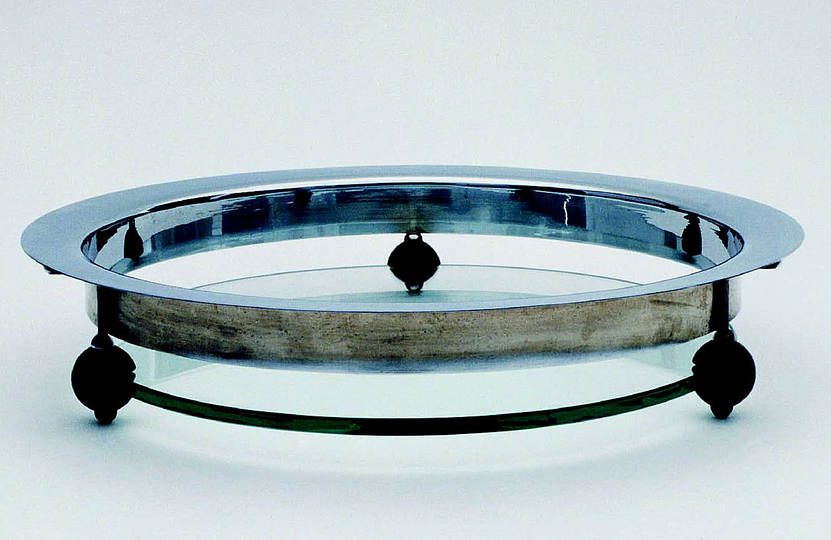Bauhaus: Architectural and Interior Design
Founder: Kenneth Brown
everton smith
Helge Drafz
joao b
konkovich sasha
martha dos santos nascimento
RuoHan Zou
Svetlana Savinova
Weronika Wojciuk
Yuxiao.Zhang
Helge Drafz
joao b
konkovich sasha
martha dos santos nascimento
RuoHan Zou
Svetlana Savinova
Weronika Wojciuk
Yuxiao.Zhang
joao b
konkovich sasha
martha dos santos nascimento
RuoHan Zou
Svetlana Savinova
Weronika Wojciuk
Yuxiao.Zhang
konkovich sasha
martha dos santos nascimento
RuoHan Zou
Svetlana Savinova
Weronika Wojciuk
Yuxiao.Zhang
martha dos santos nascimento
RuoHan Zou
Svetlana Savinova
Weronika Wojciuk
Yuxiao.Zhang
RuoHan Zou
Svetlana Savinova
Weronika Wojciuk
Yuxiao.Zhang
Svetlana Savinova
Weronika Wojciuk
Yuxiao.Zhang
Weronika Wojciuk
Yuxiao.Zhang
Yuxiao.Zhang
The metal workshop included the development “from wine jug to lantern”, as Laszlo Moholy-Nagy summarised. Until 1922, Johannes Itten led the metal workshop, which was established with the support of the Weimar court jewellers Theodor Müller, who had already collaborated with Henry van de Velde. Paul Klee and Oskar Schlemmer temporarily led the workshop after Itten’s departure in 1922/1923, before László Moholy-Nagy was identified as its head until 1928. The second Bauhaus director, Hannes Meyer, restructured the Bauhaus in 1928 and combined the metal, carpentry and mural painting workshops into a furnishing workshop, which was to collaborate closely with the Building Department. The metal workshop was run by Marianne Brandt until 1929 and by Alfred Arndt from then until 1931, before Lilly Reich took over the complete furnishing department in the course of renewed profile changes and personnel cuts by Ludwig Mies van der Rohe. In Dessau, Rudolf Schwarz and Alfred Schäfter worked as the Masters of Craft. The Gropius architecture practice had taken a central position in education at the Bauhaus. For the first great post-war commission, the Sommerfeld house in Berlin, Gropius was inspired by the early country houses of Frank Lloyd Wright. Joost Schmidt carried out the woodcarving work, Josef Albers made the coloured stained glass windows and Marcel Breuer designed some of the furniture. The key works of the third Bauhaus director, Ludwig Mies van der Rohe, in the Weißenhof development in Stuttgart, the Barcelona Pavilion and the Villa Tugendhat in Brno, date from before his time at the Bauhaus but shape the image of Bauhaus architecture until this day. Walter Gropius and Ludwig Mies van der Rohe received important impulses for their later architectural creations in the office of Peter Behrens in Berlin from 1908 to 1910. In 1910 Gropius became a member of the Deutscher Werkbund, which had been founded by artists, architects and entrepreneurs in 1907, then established his own architecture practise in Berlin together with Adolf Meyer in 1910 and carried out his first main work, the Fagus Shoe Factory in Alfeld, together with Meyer in 1911.

Ludwig Mies van der Rohe, German pavilion for the International Exhibition in Barcelona, 1929, condition in 2005
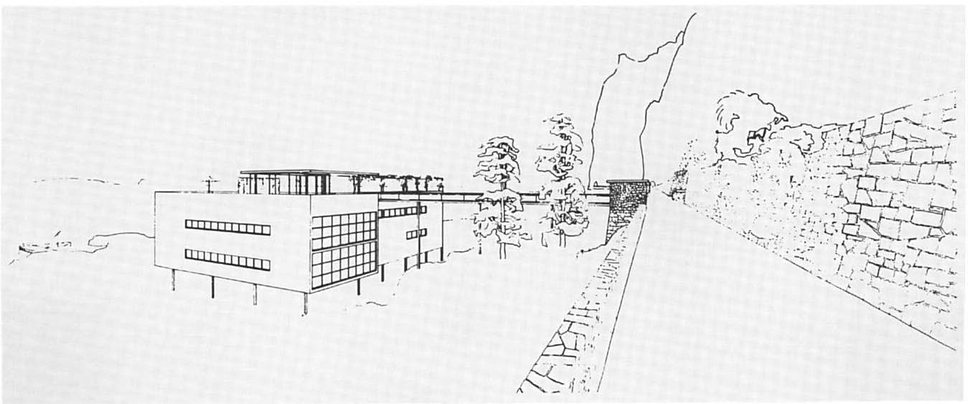
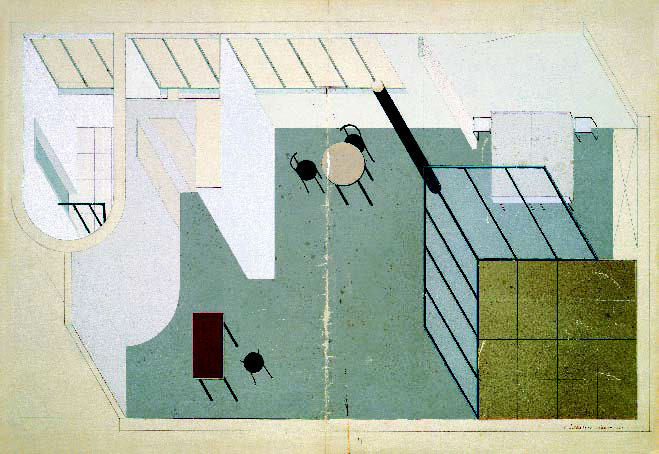
Wilhelm Heß, Plan of a studio apartment in the Junkers city in Dessau, isometry with interior and colour, study for the course with Ludwig Mies van der Rohe, 1932
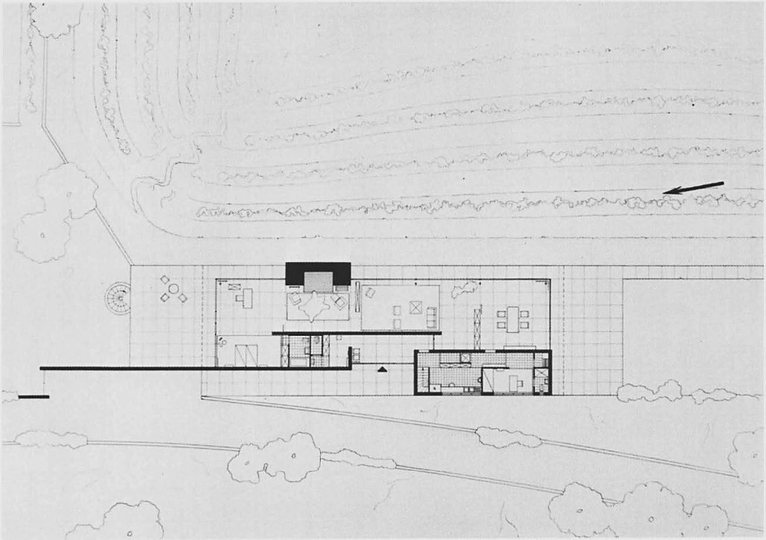
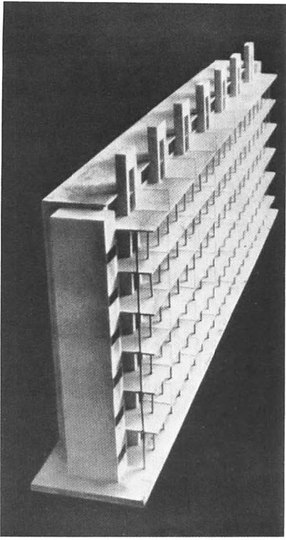
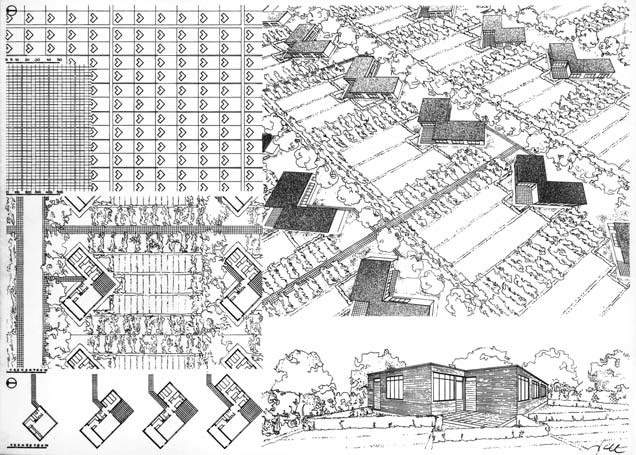
Pius Pahl, Large single-storey detached houses, plan, draft made under Hilberseimer, 1931-32
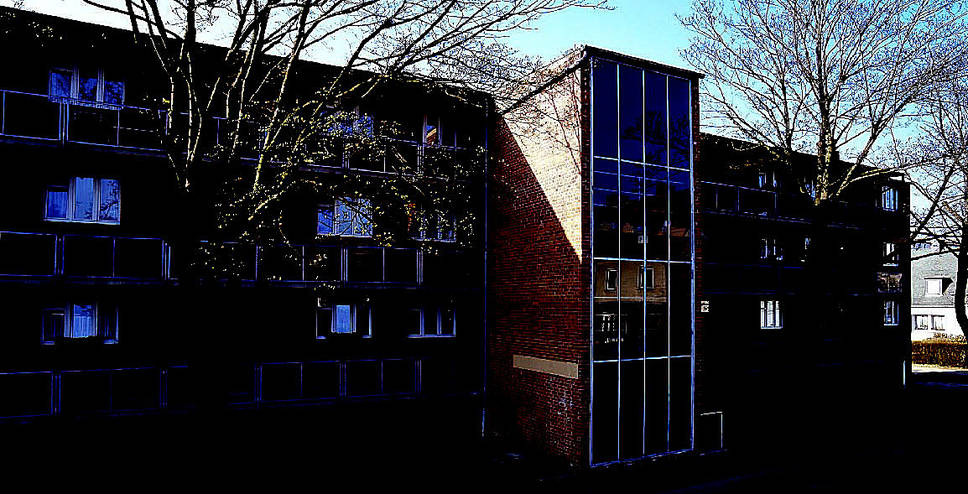
Architecture department at the Bauhaus Dessau under Hannes Meyer, Arcade houses in Dessau-Törten, 1929-30, condition in 2005
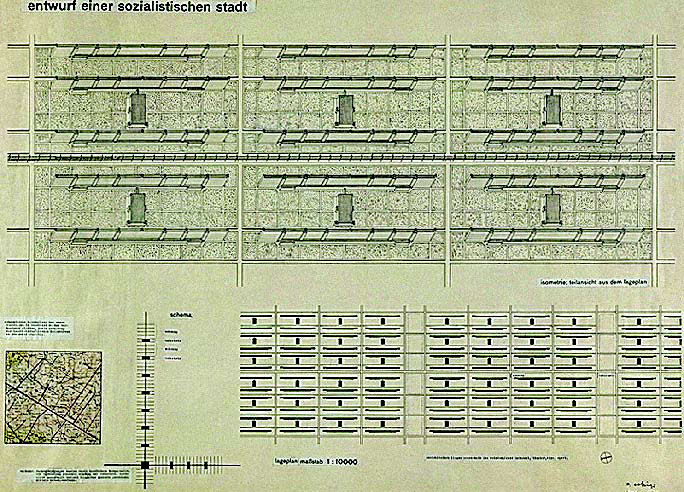
Reinhold Rossig, Sketch of a socialist city, work for the course with Ludwig Hilberseimer, 1931
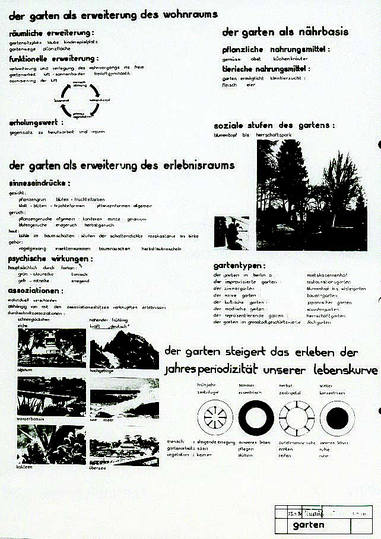
Heiner Knaub, The Garden as an Extension of the Living Space, study dossier for the course with Hannes Meyer, 1930
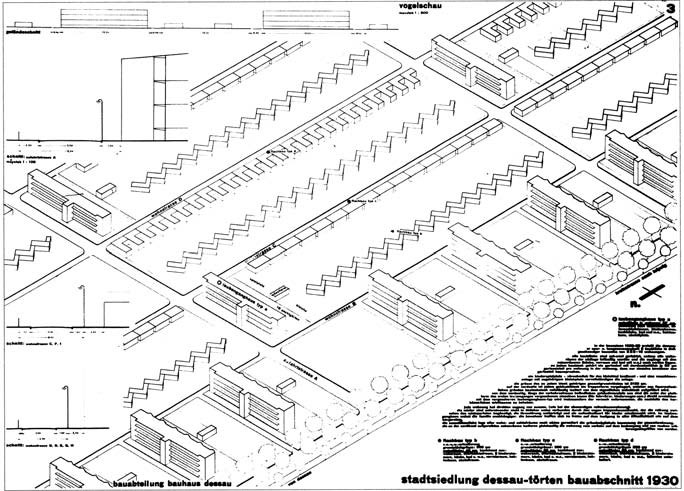
Architecture department at the Bauhaus Dessau under Hannes Meyer, Plan of the Dessau-Törten Estate, 1930
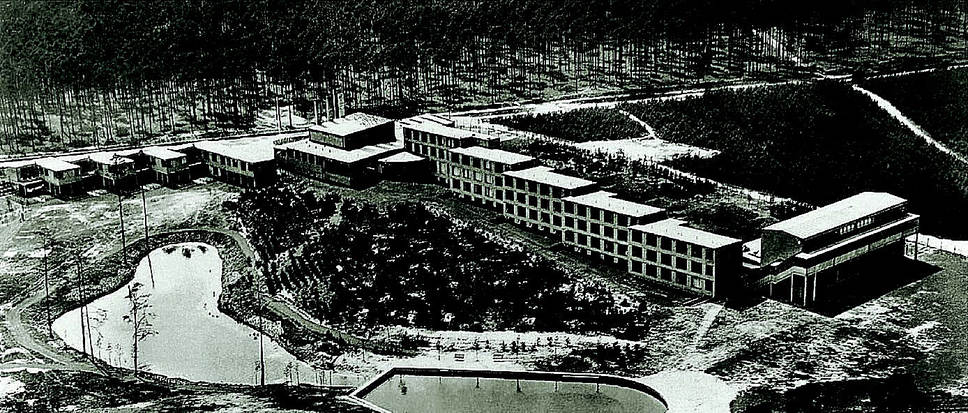
Hannes Meyer, Syndicate school of the ADGB in Bernau, aerial view by Junkers, 1928-30
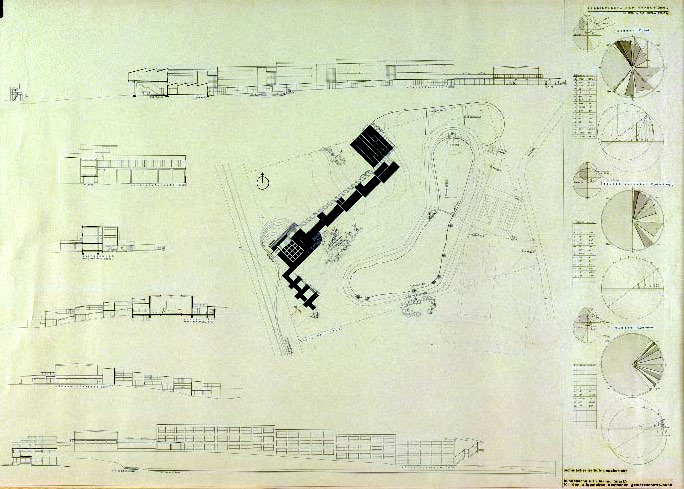
Hannes Meyer, Hans Wittwer, and the students from the Architecture Department of the Bauhaus Dessau, Sketch for the competition for the ADGB Federation School (Allgemeiner Deutscher Gewerkschaftsbund) in Bernau, plate 3, 1928
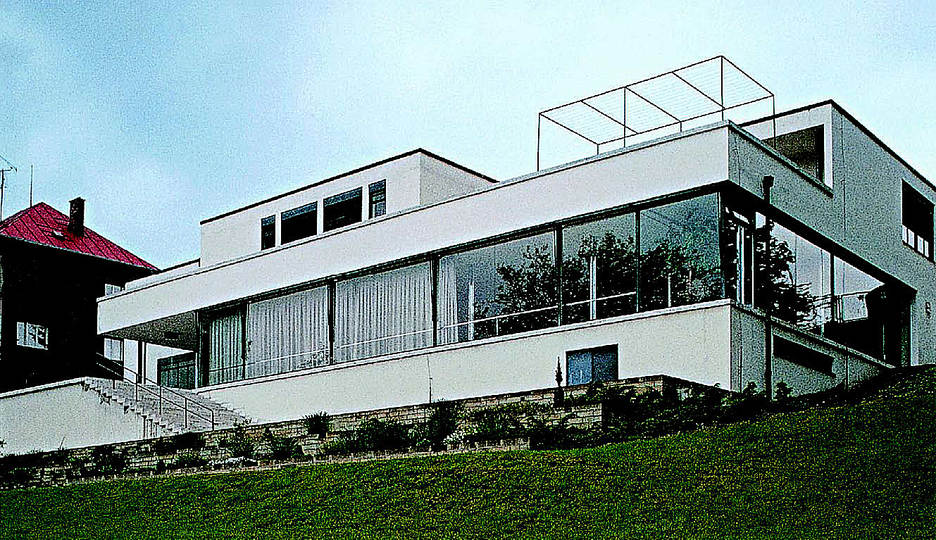
Ludwig Mies van der Rohe, Villa Tugendhat in Brno, Czech Republic
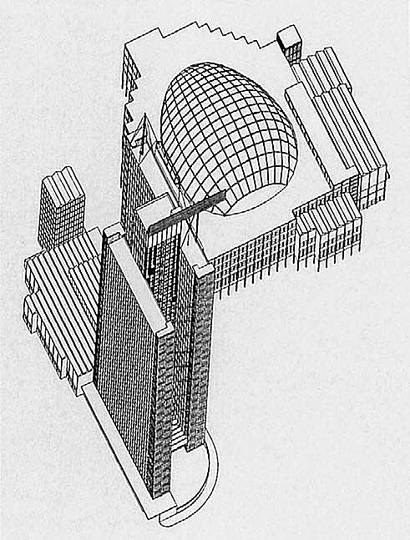
Hannes Meyer and Hans Wittwer, Design presented to the competition for the Palace of Nations in Geneva, axonometric projection, 1927
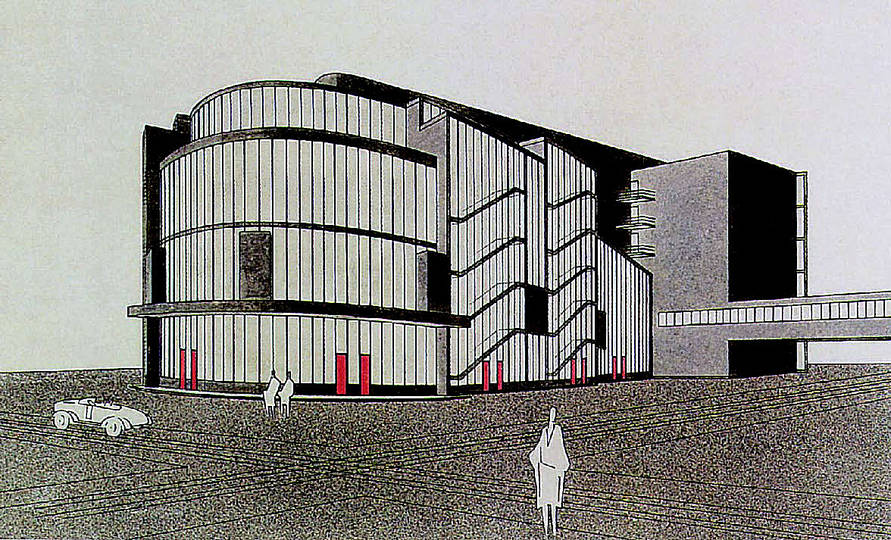
Walter Gropius, Drawing by Carl Fieger, Total Theatre project for Erwin Piscator, 1927

Walter Gropius, Employment agency in the city of Dessau, view, 1927-29
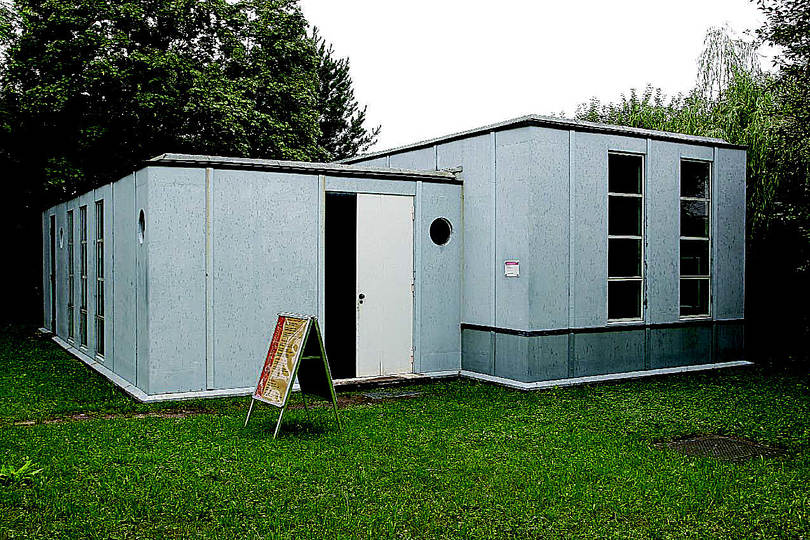
Georg Muche/Richard Paulick, Steel house in Dessau-Törten, 1926
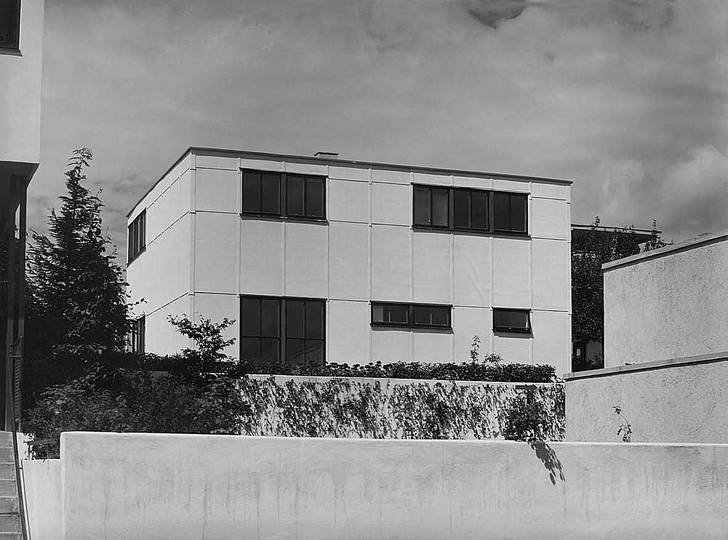
Walter Gropius, House number 17 at the German Werkbund Exhibition The Apartment, Stuttgart, Weißenhof estate, 1927
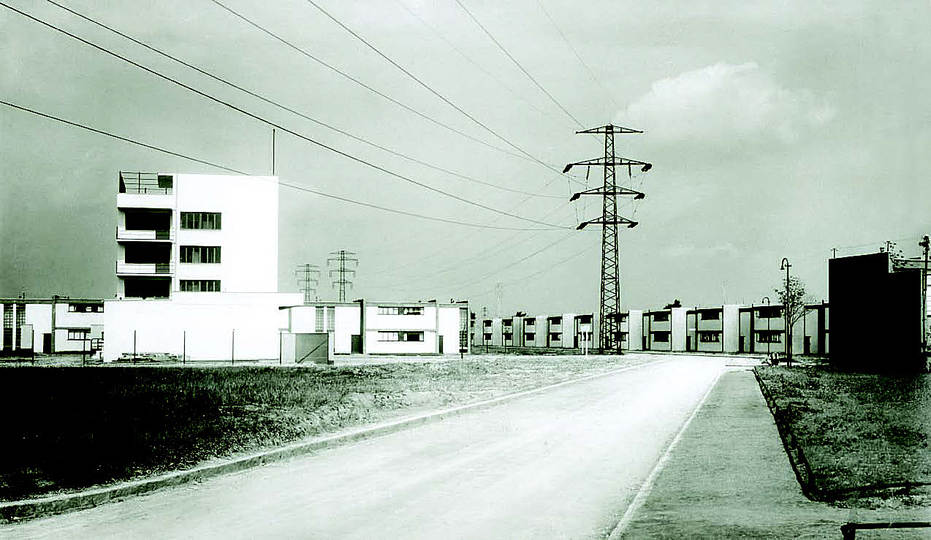
Walter Gropius, Cooperative in Dessau- Törten, 1928
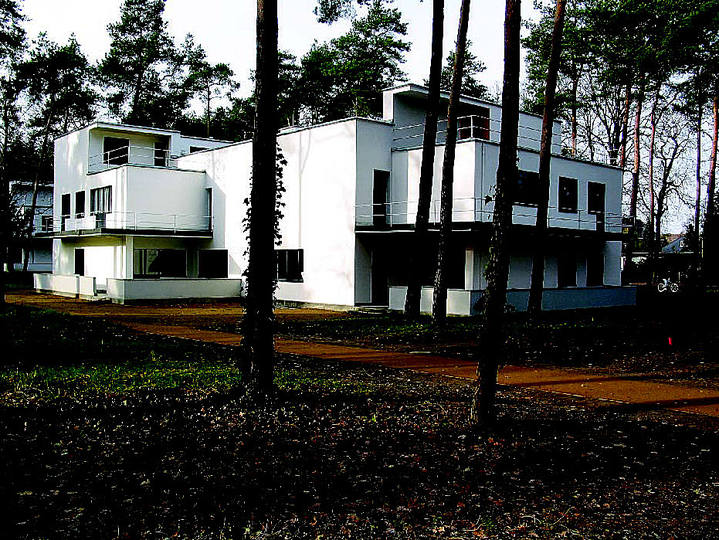
Walter Gropius, Masters’ houses in Dessau, 1925/26
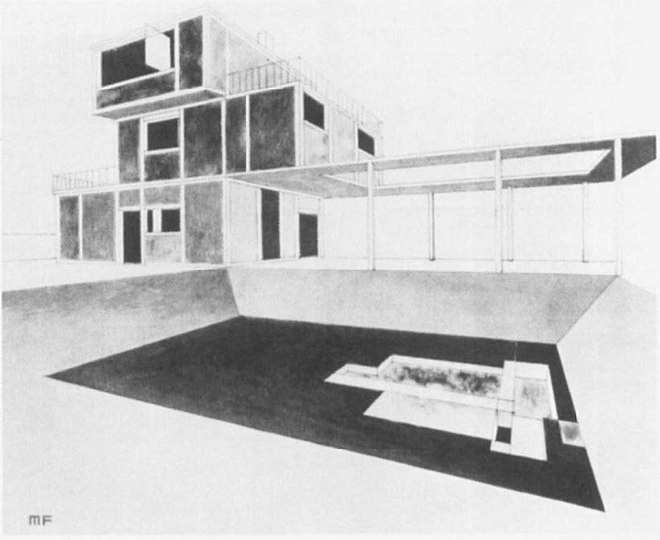
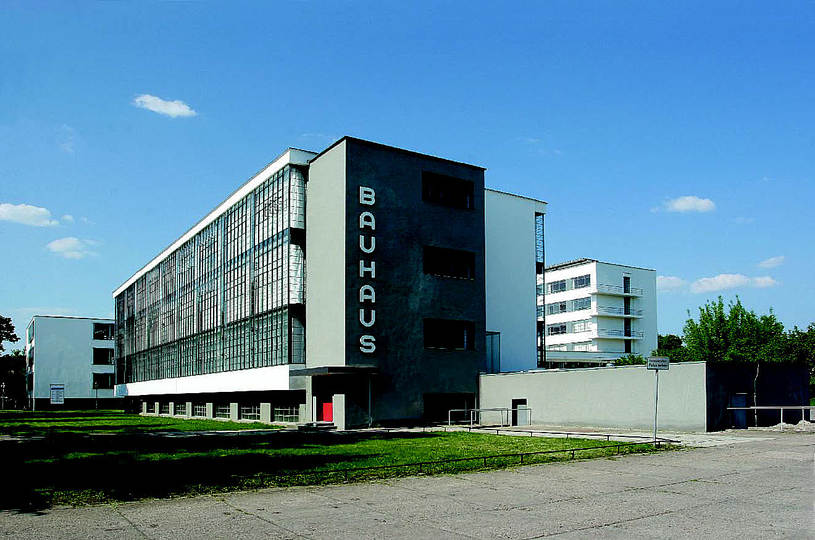
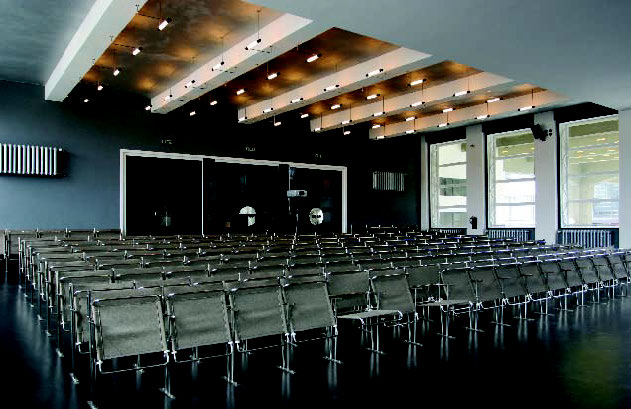
Bauhaus Dessau building, Auditorium with chairs by Marcel Breuer and lighting by Max Krajewski, 1926
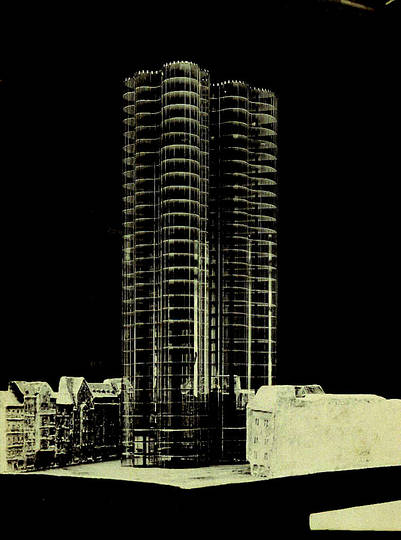
Ludwig Mies van der Rohe, Glass skyscaper in organic forms, 1920-21
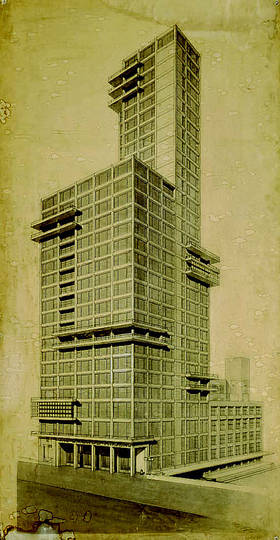
Walter Gropius and Adolf Meyer, Sketch by Carl Fieger for the Chicago Tribune Competition, 1922
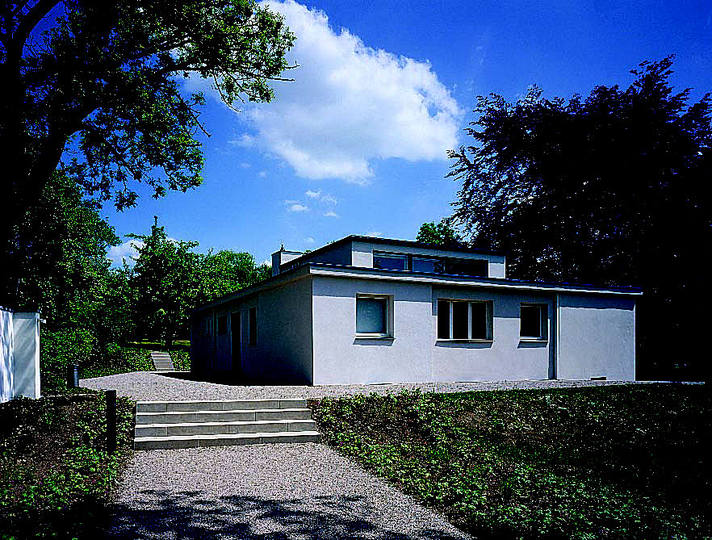
Georg Muche / Gropius workshop, Haus am Horn, 1923, north-west view, condition in 1999
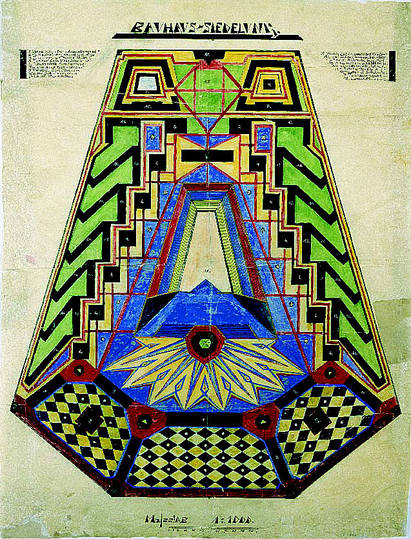
Walter Determann, Draft for a Bauhaus settlement, 1920
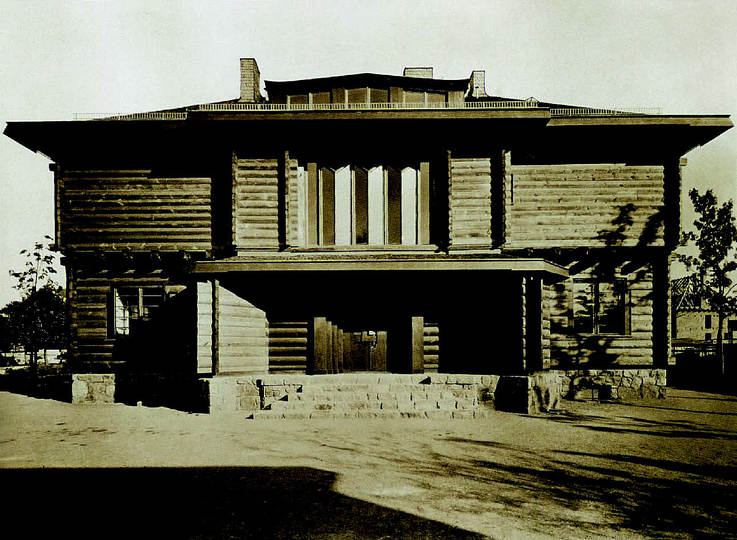
Walter Gropius, Adolf Meyer, Sommerfeld house, Berlin, 1920
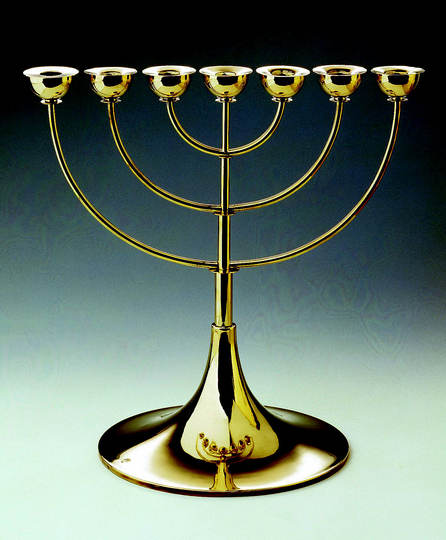
Gyula Pap, Candelabra with seven arms (MT 2), 1922 (version from 1923/24)
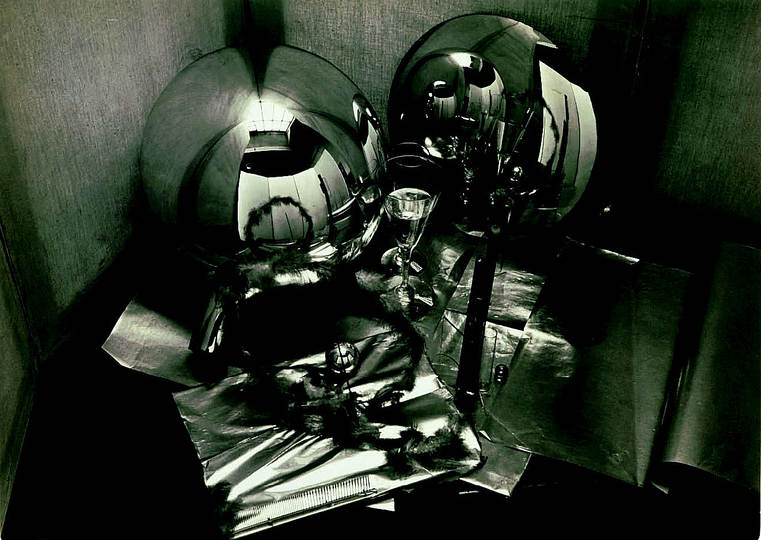
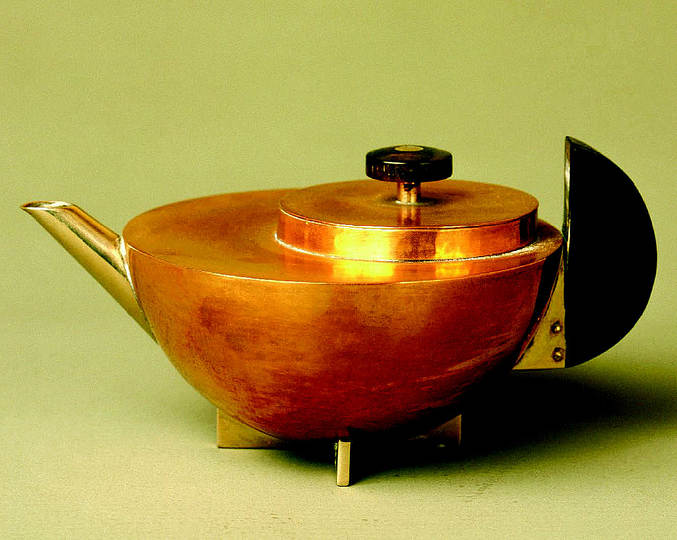
Marianne Brandt, Small teapot (MT 49), 1924
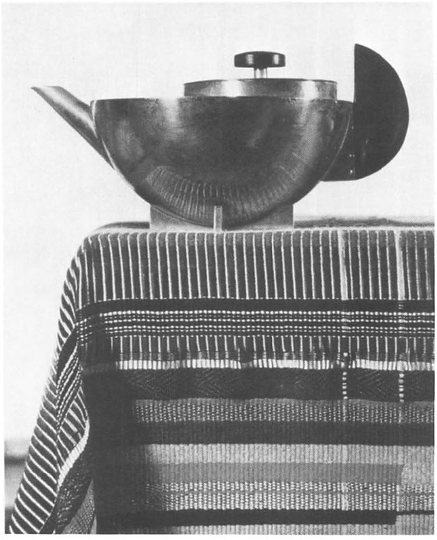
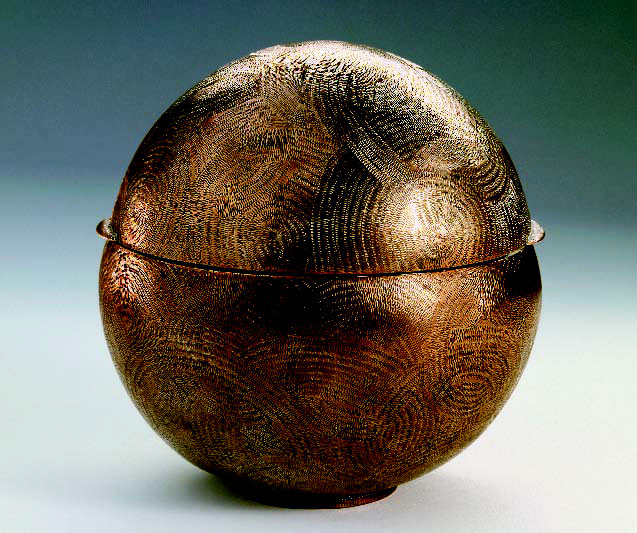
Naum Slutzky, Spherical container, 1920

Metal workshop at the Bauhaus Weimar, 1923
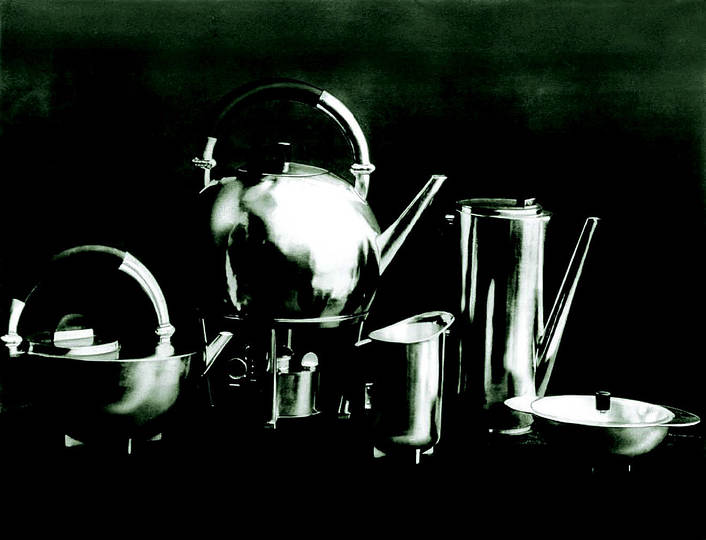
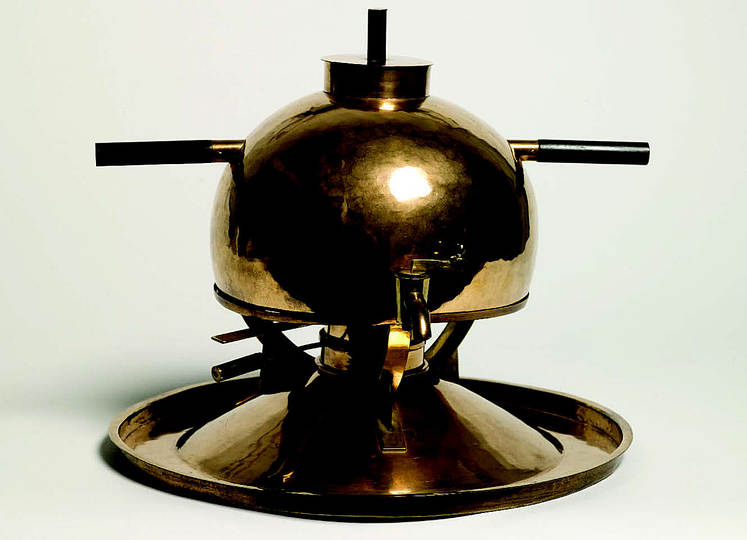
Wilhelm Wagenfeld, Coffee machine (MT 7), 1923/24
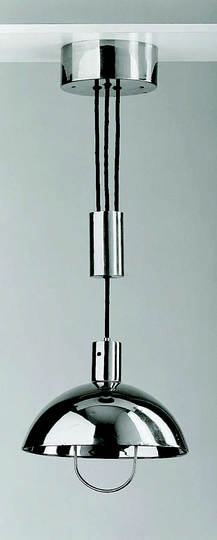
Marianne Brandt, Hans Przyrembel, Adjustable ceiling fixture (ME 105a), 1926
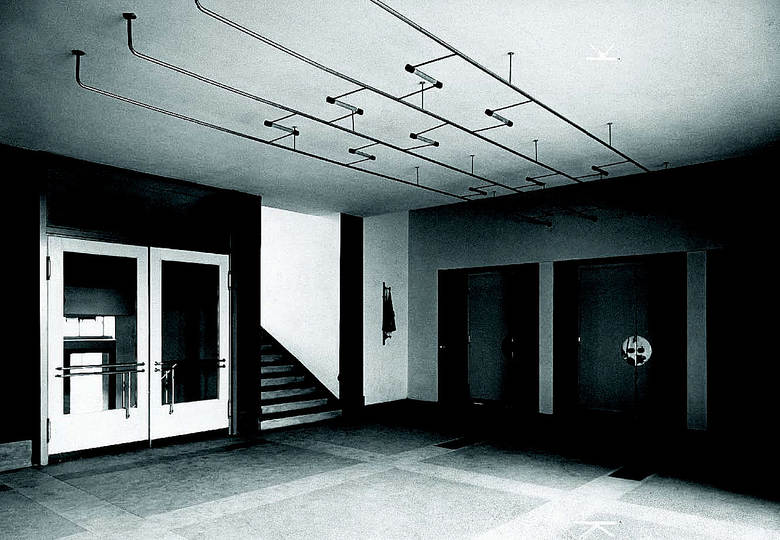
Bauhaus Dessau building, Vestibule with Soffitten lighting system by Max Krajewski and door handles (swing door and auditorium) by Walter Gropius in the metal workshop, 1926,
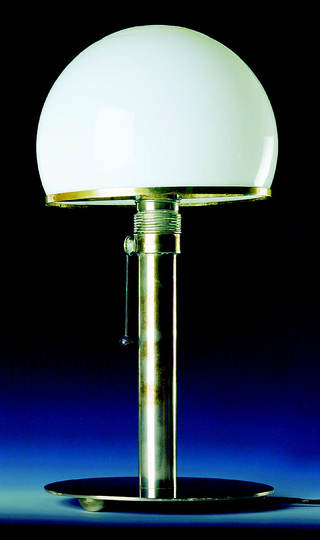
Wilhelm Wagenfeld, Table lamp (version in glass MT 8/ME 2), 1924

Otto Rittweger, Wolfgang Tümpel, Wilhelm Wagenfeld, Tea infusers with stands for storage (MT 20, MT 11, MT 59, MT 22), 1924
